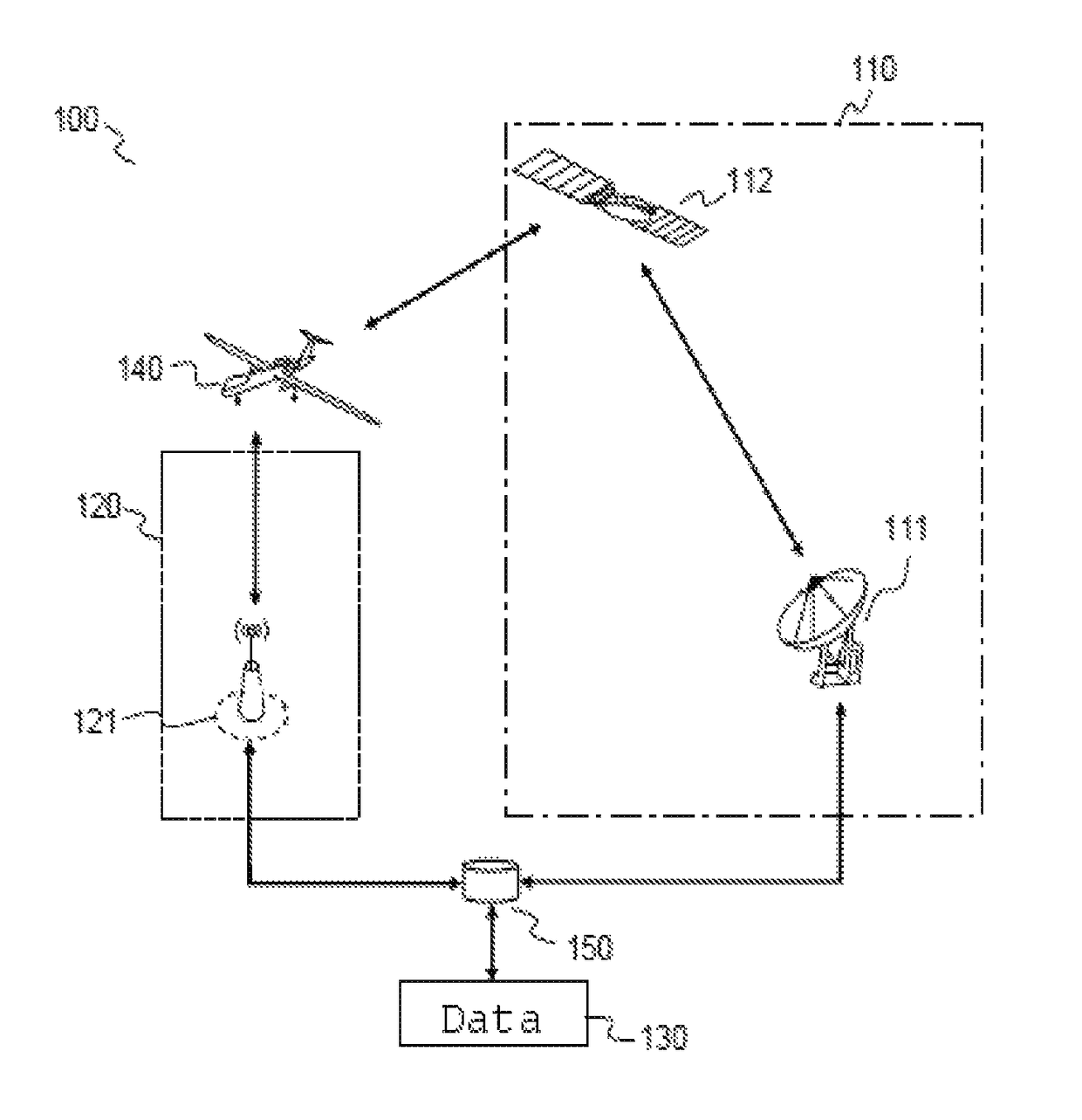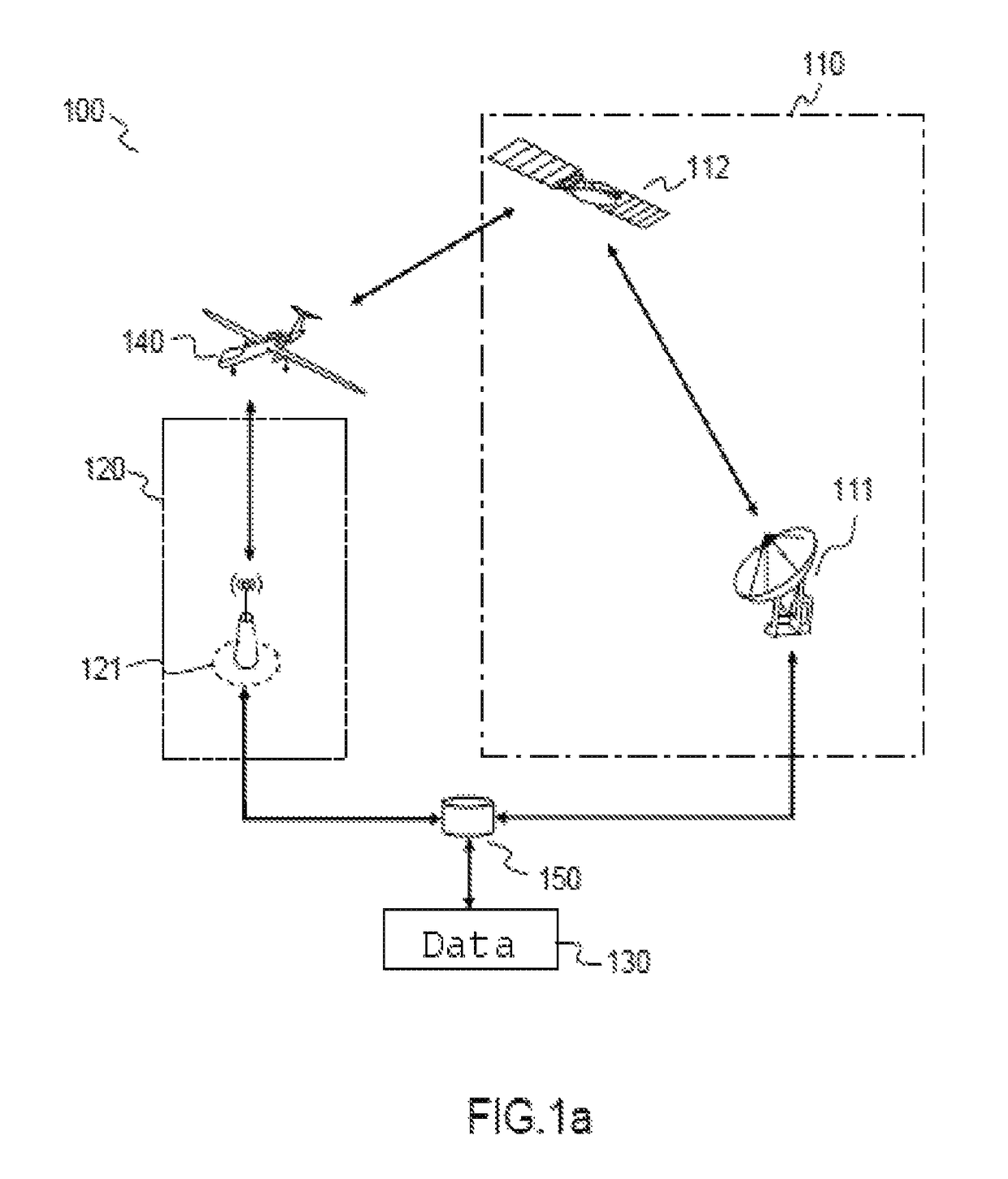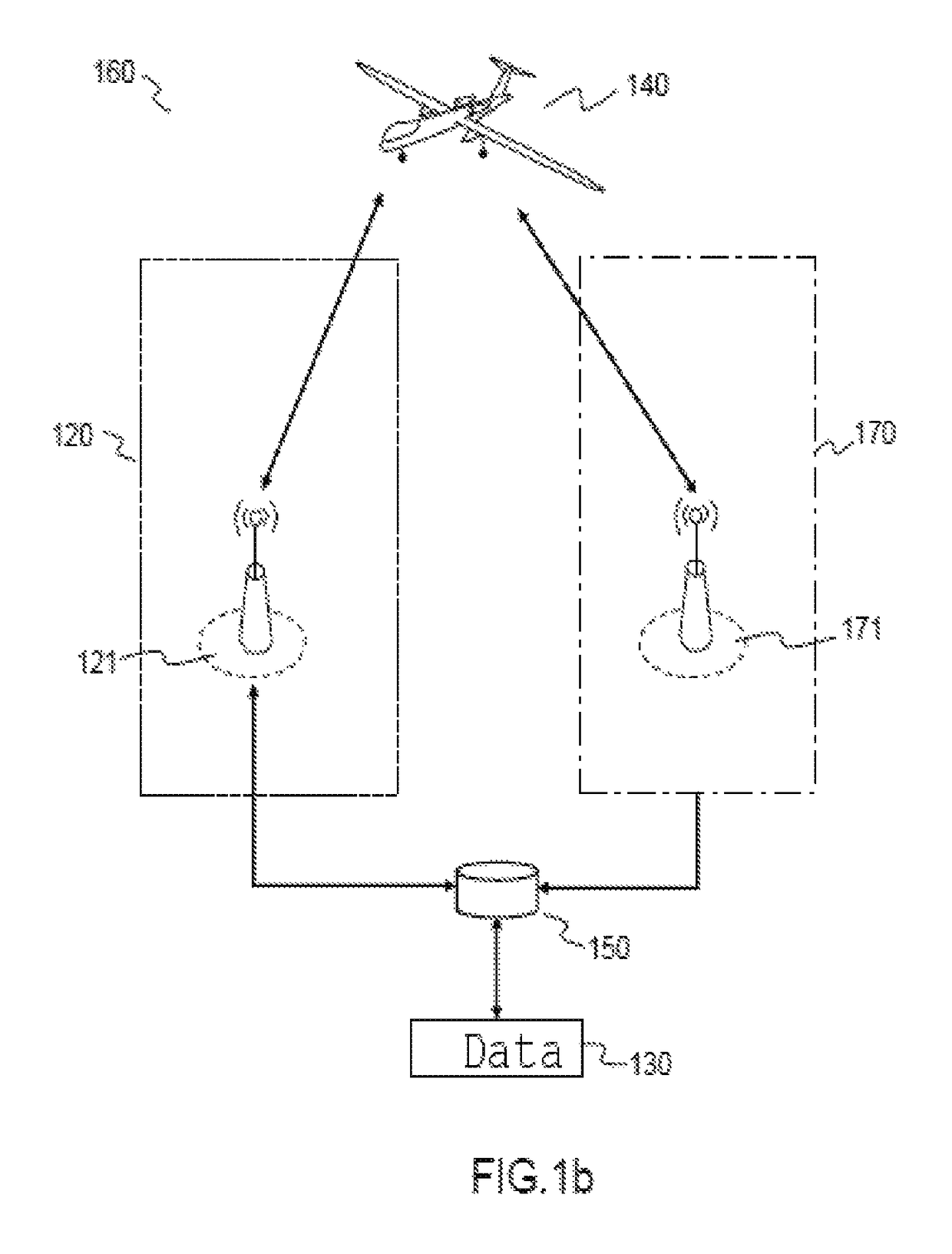Method for synchronizing signals in a terrestrial and satellite link and associated architecture
a terrestrial and satellite link and synchronization technology, applied in the field of telecommunications, can solve the problems of system failure, loss of service continuity event, limited insertion of unmanned aircraft, or drones into airspace,
- Summary
- Abstract
- Description
- Claims
- Application Information
AI Technical Summary
Benefits of technology
Problems solved by technology
Method used
Image
Examples
first embodiment
[0080]FIG. 1a presents a communication system 100 allowing the implementation of the method according to the invention. This communication system is composed of a main network in the form of a satellite network 110 comprising a first station 111, the first station being a satellite station, transmitting data by way of a satellite 112, and of a secondary network in the form of a terrestrial network 120 comprising a second station, the second station being a terrestrial station 121. The two networks make it possible to dispatch data 130 bound for a user terminal 140, possessing capabilities for communication on both networks.
[0081]The satellite station, the terrestrial station and the user terminal each employ a temporal reference used during the transmission of messages. This temporal reference makes it possible to determine the instants of emission of the messages, by effecting the link between a time slot (such as for example a frame number, a time interval number) and an emission ...
second embodiment
[0083]FIG. 1b presents a communication system 160 allowing the implementation of the method according to the invention, in which the secondary network is a terrestrial network 170 comprising a terrestrial station 171.
[0084]The method described here for synchronizing the instants of arrival applies to the two embodiments presented in FIGS. 1a and 1b. The subsequent description refers to the first embodiment of the communication system according to the invention represented in FIG. 1a, but could apply in an identical manner to the second embodiment.
[0085]The method also applies in the presence of more than two secondary networks, and of more than two user terminals.
[0086]The implementation of a hybrid communication using the terrestrial network and the satellite network and requiring synchronization of the transmission of the signals to a user terminal depends on the position of the user and requires the calculation of a time shift to be applied to the emissions from the terrestrial s...
PUM
 Login to View More
Login to View More Abstract
Description
Claims
Application Information
 Login to View More
Login to View More - R&D
- Intellectual Property
- Life Sciences
- Materials
- Tech Scout
- Unparalleled Data Quality
- Higher Quality Content
- 60% Fewer Hallucinations
Browse by: Latest US Patents, China's latest patents, Technical Efficacy Thesaurus, Application Domain, Technology Topic, Popular Technical Reports.
© 2025 PatSnap. All rights reserved.Legal|Privacy policy|Modern Slavery Act Transparency Statement|Sitemap|About US| Contact US: help@patsnap.com



